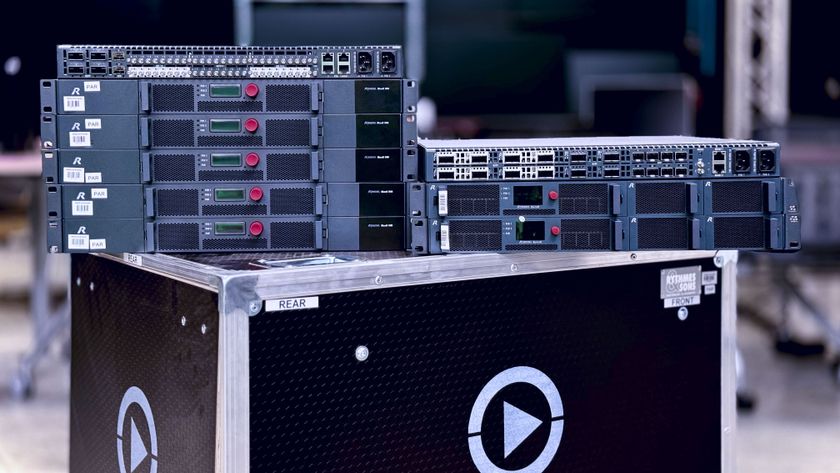When The Annapolis Area Christian School (AACS) decided to build a 700-seat auditorium on its Upper School campus in adjacent Severn, MD, school representatives knew what they wanted: an AV system to accommodate a range of productions from musical events to spoken-word programs.
In late 2003, they met with Ivan Baran and a team from Arc Light Entertainment, a Baltimore-based custom AV and control systems contractor. Arc Light's three partners-Todd Neal, Gary Conrad and Baran-all experienced in commercial design and installation, founded the company in 1999 to address a burgeoning residential market.
"We leaned back on our commercial roots after 9/11," Baran says. "AACS approached us through acoustician Gerald Henning of Henning Associates (Rockville, MD). The school was gearing up for construction of the auditorium, designed by RCG Architects, Baltimore."
Like many schools, AACS' budget was limited, so Baran recommended the project be divided into a design/build. "They needed a framework, that's the hardest part," he explains. "We got under contract to design and establish a budget first."
The main consideration, Baran says, was infrastructure. "We wanted to get the cable where it needed to be; it can always be augmented or changed out. The school wanted production intercom, but for budgetary reasons it didn't make sense to install the intercom equipment at the onset, as their needs didn't require its use. So the infrastructure was installed to give them an upgrade path. It was similar with video where we used a lot of cabling, all on patch bays to give them flexibility."
The result is a $115,000 operator-driven live sound reinforcement system, light on video, heavy on audio and ideal for its cadre of student operators. Arc Light chose a 32-channel Soundcraft LX7ii console. The operator can mix from the control room in the rear of house on the balcony level or from mix position under the balcony. The console, Baran says, proves to be an ideal and cost-effective starting point for system operators. "Consoles are always improving, and this one can easily be upgraded and relegated for other uses at the school."
Selection of the JBL Series AE (Application Engineered) center-cluster speaker system was made jointly by Baran, Andrew Rutkin of JBL Professional, and Gordon Jacobs of Polysonics of Remington, VA. "The clincher was Gordon, since he was doing the EASE modeling," Baran states. "We were confident in JBL's ability to perform in the space, and knew it could be easily arrayed. A JBL planar array kit reduced the number of rigging points needed. Once positions were known, we modeled in the clusters. The lefts and rights are singles, and the center is a group of five boxes. Custom steel frames were made to rig to the structure."
For projection, the choice was a Christie Digital LX-65 projector with the brightness and optical lenses required to shoot 70 feet to the 21 x 28-foot screen. "It's the right projector for the throw, it's the right price," Baran says, "and it can handle several types of inputs. During Chapel, it's used for PowerPoint presentations via an Extron interface."
Arc Light used Whirlwind to provide all the MASS cable assemblies to their requirements, making the installation process easier, Baran says. "With multi-pin contacts, there's intense site work, but by having them do custom put-ups, we minimized it."
Arc Light Entertainment... www.arclighte.com
Christie...www.christiedigital.com
JBL...www.jblpro.com
Polysonics...
www.polysonics-corp.com
Shure...www.shure.com
Soundcraft...www.soundcraft.com
Young Operators
"We approach all design/build projects with the question, 'Who are we building for, and what is the goal?' In this case, it was about a school," says Arc Light Entertainment's Ivan Baran.
Arc Light has had several universities on its client roster, with those projects geared toward tech classrooms and other instructional spaces. The AV system for the Annapolis Area Christian School was the company's first high school client.
"With students operating the system, the project presented a different set of challenges, and I didn't want to overwhelm them with more controls than they needed," Baran says. "We wanted to keep it refined and simple, user-friendly for several operators of varying levels of knowledge."
The Shure P4800, the processing brain that holds it all together, unburdened the students from tuning the system to the room, he says. "It limits the amount of control, so they can't get into trouble."
Because the AACS space was more performance, Baran and team were able to draw comparisons to another, less modest project in their portfolio, their work as subcontractors in renovations at the Kennedy Center Opera House.
"We parlayed a lot of that mindset into AACS," Baran notes. "The Opera House has a colossal system-and this doesn't need it, of course-but when you come down to the basics of reinforcing speech, music and video infrastructures, these elements always apply."











